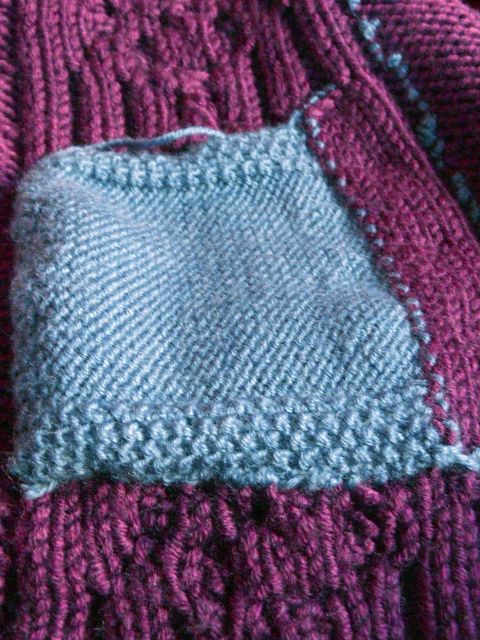And so ends, happily, the Adventure of the Wandering Braid.
Pattern: Braided Pullover
Sweater Yarn: Filatura di Crosa Zara Plus, 774m, No.1706; 100% superwash wool. An aran weight yarn, knitted firmly in worsted weight. Blocking smoothed out the tension of knitting, and gave it a velvety, smooth drape.
Pocket Lining Yarn: Filatura di Crosa Zarina, tiny amount, No.1481.
Needles: 4mm for body ribbing; 4.5mm for body, and for sleeve ribbing; 5mm for sleeve; 3mm for pocket lining. The reasons for my peculiar needle choice explained here… sadly, it did not work as intended, and I had to buy another skein.
Final Thoughts:
Although this took more than 10 days, I’m consoling myself with the fact it took, actually, 10 knitting days.
I’m pretty happy with the result, although I might pick up and lengthen the sleeve cuffs later. The braid lies exactly as I wanted it to: a trompe l’oeil of a wrap top. I’m really happy that I decided to do the chest section of the braid separately – otherwise, the sharp change in angle combined with bush shaping was creating horrid bumps and warping.
I decided to restrict the pocket size to the width of the braid (which gets stretched slightly when worn), so as not to have any puckering in the stockinette section – over the tummy, no less! – where I sewed it down.
The pocket is held closed with light- weight plastic snaps; I added these pretty buttons along the braid to continue the illusion of its being a wrap top.
I’m happy with the back shaping too! It makes all that calculating and measuring worthwhile.
Overall, I think it’s a good looking and mostly practical pullover. I wish the sleeves were longer because when I face winter, I face 10 deg C without heating, and have to rely on my mammalian evolutionary ancestry to keep warm. But then again, I wouldn’t be facing winter without the defence of a long sleeved layer inside, so perhaps this pullover can stay bracelet length.
The most impractical yet beloved component of my sweater is the tiny pocket – what on earth can I keep in it??! A microfilm with the plans of the new submarine?? Do spies even use microfilm nowadays, or have I been reading too many Agatha Christies? Never mind, it’ll hold a scrap of tissue paper if I get a runny nose.





















